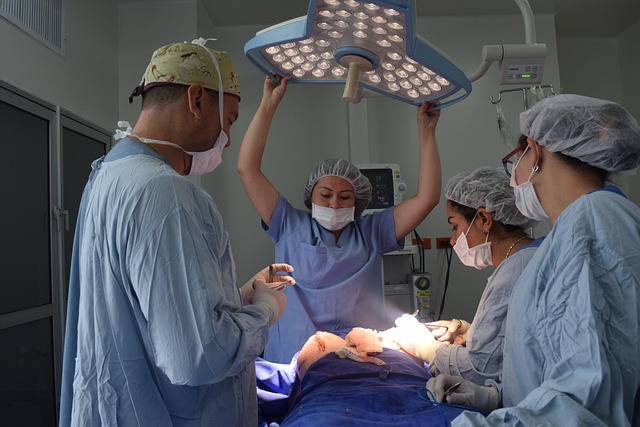Fat Transfer: Understanding the Innovative Body Contouring Procedure
Fat transfer, also known as fat grafting or autologous fat transplantation, is a cosmetic procedure that has gained popularity in recent years. This innovative technique involves harvesting fat from one area of the body and transferring it to another, allowing patients to reshape and enhance their appearance naturally. As a versatile and minimally invasive option, fat transfer has become an important tool in the plastic surgery field, offering patients a way to achieve their desired body contours without the use of synthetic implants.

What are the common areas treated with fat transfer?
Fat transfer can be used to enhance various areas of the body, making it a versatile option for body contouring. Some of the most popular treatment areas include:
-
Face: Restoring volume to sunken cheeks, filling in deep wrinkles, and rejuvenating the under-eye area.
-
Breasts: Augmenting breast size or correcting asymmetry without the use of implants.
-
Buttocks: Enhancing shape and size for a more curvaceous appearance (often called a “Brazilian Butt Lift”).
-
Hands: Reducing the appearance of visible veins and tendons for a more youthful look.
-
Calves and other body areas: Improving contours and addressing asymmetry.
What are the benefits of fat transfer compared to other cosmetic procedures?
Fat transfer offers several advantages over traditional cosmetic procedures:
-
Natural results: Since the procedure uses the patient’s own fat, the results look and feel more natural than synthetic implants.
-
Dual contouring effect: Patients benefit from both fat removal in problem areas and volume enhancement in desired areas.
-
Minimally invasive: Fat transfer typically requires smaller incisions compared to traditional implant surgeries.
-
Reduced risk of allergic reactions: Using the body’s own tissues minimizes the risk of adverse reactions.
-
Long-lasting results: While some of the transferred fat may be reabsorbed, a significant portion can provide permanent enhancement.
Who is an ideal candidate for fat transfer?
Ideal candidates for fat transfer are generally healthy individuals who:
-
Have adequate fat deposits in donor areas for harvesting.
-
Desire natural-looking volume enhancement in specific body areas.
-
Have realistic expectations about the procedure’s outcomes.
-
Are non-smokers or willing to quit smoking before and after the procedure.
-
Have good skin elasticity in the treatment areas.
It’s important to note that fat transfer may not be suitable for everyone, and a consultation with a board-certified plastic surgeon is necessary to determine candidacy.
What is the recovery process like after a fat transfer procedure?
The recovery process following a fat transfer procedure can vary depending on the areas treated and the extent of the surgery. Generally, patients can expect:
-
Swelling and bruising in both donor and recipient areas, which typically subsides within 2-3 weeks.
-
Mild discomfort, manageable with prescribed pain medication.
-
Limited activity for the first 1-2 weeks, with a gradual return to normal activities.
-
Compression garments may be required to support healing and maintain results.
-
Final results becoming visible after 3-6 months as swelling fully resolves and transferred fat settles.
| Provider | Services Offered | Key Features/Benefits |
|---|---|---|
| American Society of Plastic Surgeons | Fat Transfer Procedures | Board-certified surgeons, comprehensive patient resources |
| American Board of Cosmetic Surgery | Fat Grafting | Specialized cosmetic surgery focus, rigorous certification process |
| International Society of Aesthetic Plastic Surgery | Global Fat Transfer Resources | International network of surgeons, global standards of care |
| The Aesthetic Society | Fat Transfer Education | Advanced techniques, ongoing professional education |
Are there any risks or potential complications associated with fat transfer?
As with any surgical procedure, fat transfer carries some risks and potential complications:
-
Uneven results or asymmetry
-
Excessive fat reabsorption, leading to loss of volume over time
-
Infection at donor or recipient sites
-
Contour irregularities or lumps
-
Fat embolism (rare but serious complication)
-
Scarring at incision sites
It’s crucial for patients to choose a qualified, experienced plastic surgeon and follow all pre- and post-operative instructions to minimize these risks.
In conclusion, fat transfer is a versatile and innovative body contouring procedure that offers patients a natural way to enhance their appearance. By using the body’s own fat cells, this technique provides long-lasting results with a reduced risk of complications compared to synthetic implants. While not suitable for everyone, fat transfer has become an important tool in the plastic surgery field, allowing skilled surgeons to sculpt and reshape various areas of the body with precision and artistry.
This article is for informational purposes only and should not be considered medical advice. Please consult a qualified healthcare professional for personalized guidance and treatment.






